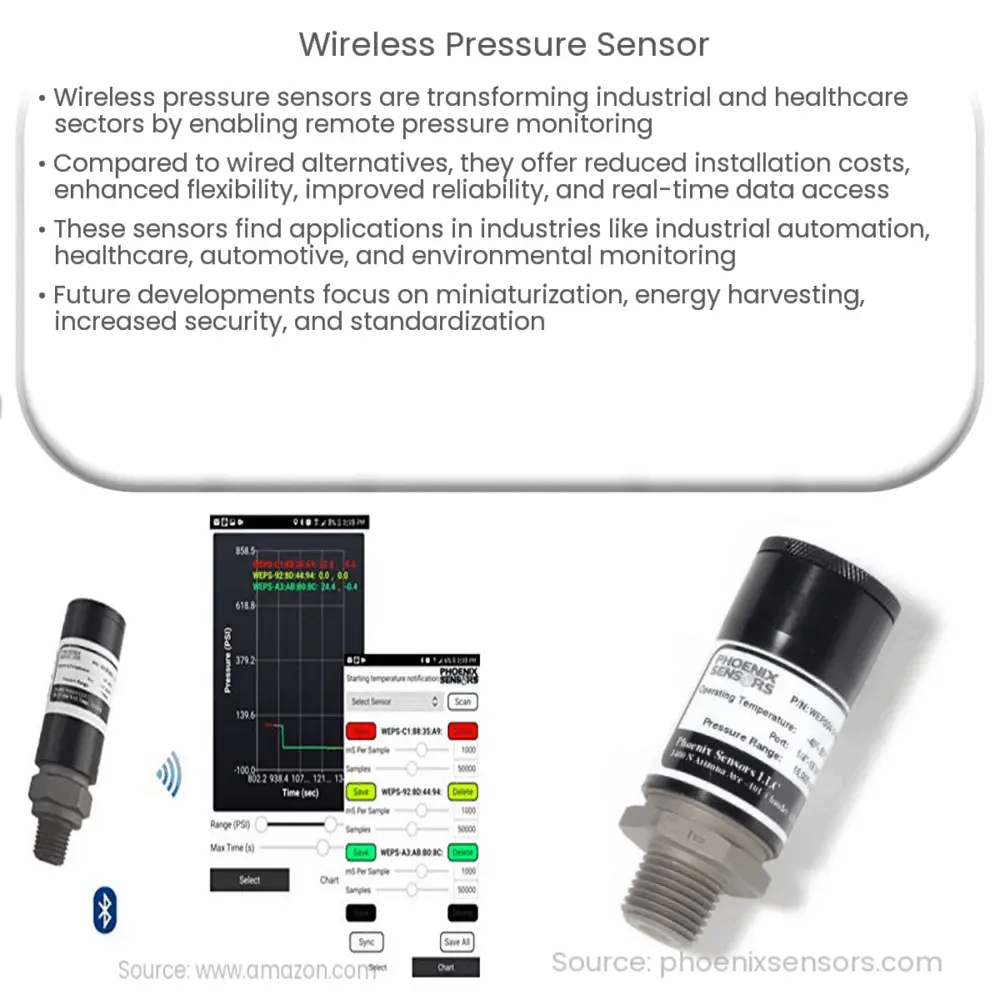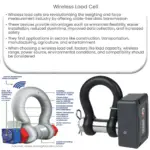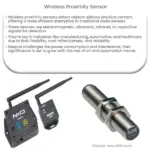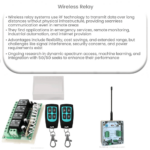Wireless pressure sensors enable remote monitoring in various industries, offering reduced installation costs, flexibility, and real-time data access.

Wireless Pressure Sensors: Revolutionizing Industrial and Healthcare Applications
Introduction
Wireless pressure sensors are innovative devices that enable the remote monitoring and measurement of pressure in various industrial and healthcare applications. These sensors have emerged as a game-changing technology, replacing traditional wired pressure sensors and opening up new possibilities for automation and data collection. In this article, we will discuss the fundamentals of wireless pressure sensors, their advantages over wired sensors, and their potential applications across various industries.
What is a Wireless Pressure Sensor?
A wireless pressure sensor is a device that detects and measures pressure changes in liquids, gases, or solid materials, without the need for a physical connection to a data acquisition system. The sensor typically consists of a sensing element, a signal conditioning unit, and a wireless communication module. The sensing element converts pressure changes into an electrical signal, which is then processed by the signal conditioning unit. The processed signal is transmitted wirelessly to a remote receiver, which interprets the data and performs the necessary actions or alerts the user.
Advantages of Wireless Pressure Sensors
Wireless pressure sensors offer several advantages over their wired counterparts, which have led to their increasing adoption across various industries:
- Reduced Installation Costs: The elimination of cables and associated hardware significantly reduces the costs and complexities associated with sensor installation and maintenance. Wireless sensors can be easily installed in hard-to-reach or hazardous locations, where traditional wired sensors may be impractical or too expensive to deploy.
- Greater Flexibility: Wireless pressure sensors can be quickly deployed, repositioned, or removed as needed, providing greater flexibility in system design and optimization. This allows for easy scalability and adaptability to changing requirements.
- Improved Reliability: Wireless sensors eliminate the risk of signal degradation due to damaged or corroded cables, ensuring more accurate and reliable measurements. In addition, the wireless communication system can be designed with built-in redundancy, further enhancing system reliability.
- Real-time Data Access: Wireless pressure sensors enable real-time monitoring and analysis of pressure data, allowing for faster decision-making and more effective process control. This can lead to improved efficiency, reduced downtime, and minimized waste in industrial applications.
Applications of Wireless Pressure Sensors
Wireless pressure sensors have found applications in a wide range of industries and sectors, including:
- Industrial Automation: In manufacturing plants and process industries, wireless pressure sensors are used to monitor and control various processes, such as fluid flow, level, and pressure in tanks and pipelines. They play a crucial role in maintaining optimal operating conditions and ensuring safety and compliance with regulations.
- Healthcare: In the medical field, wireless pressure sensors can be utilized for patient monitoring, including blood pressure and intracranial pressure measurements. These sensors can also be integrated into wearable devices, providing continuous, non-invasive monitoring for patients with chronic conditions.
- Automotive Industry: Wireless pressure sensors are increasingly being integrated into modern vehicles for monitoring and control purposes. They are used to measure tire pressure, fuel pressure, and oil pressure, as well as to monitor the performance of various systems such as braking, suspension, and engine management.
- Environmental Monitoring: These sensors can be employed in environmental monitoring applications to measure pressure changes in the atmosphere, water bodies, or soil. This data can help researchers study climate change, track pollution levels, and monitor the health of ecosystems.
- Energy Sector: In the oil and gas industry, wireless pressure sensors are used to monitor and control drilling, production, and transportation processes. They can help prevent equipment failure, optimize resource extraction, and ensure worker safety. In the renewable energy sector, these sensors can be utilized to monitor the performance of wind turbines, solar panels, and other energy generation systems, facilitating efficient operation and maintenance.
- Smart Cities: As cities become more connected and data-driven, wireless pressure sensors can play a key role in monitoring and managing critical infrastructure such as water distribution, waste management, and transportation systems. By providing real-time data and insights, these sensors can help optimize resource use, reduce environmental impact, and enhance the quality of life for urban residents.
Future Trends and Challenges
As wireless pressure sensors continue to gain traction across various industries, several trends and challenges are expected to shape their development and deployment:
- Miniaturization: The demand for smaller, more compact sensors is driving the development of miniaturized wireless pressure sensors. This trend will enable new applications in wearable devices, robotics, and other areas where size constraints are critical.
- Energy Harvesting: To improve the operational lifespan and reduce maintenance requirements, researchers are exploring energy harvesting technologies that can power wireless pressure sensors using ambient energy sources, such as vibration, light, or temperature differences.
- Enhanced Security: As wireless pressure sensors become more integrated into critical systems, ensuring secure data transmission and protection against cyber threats will be of paramount importance. This will require ongoing efforts to develop and implement robust security protocols and encryption techniques.
- Standardization: The lack of standardized communication protocols and data formats can hinder the interoperability and integration of wireless pressure sensors with other devices and systems. Industry stakeholders will need to work together to develop and adopt common standards that facilitate seamless data exchange and system integration.
Conclusion
Wireless pressure sensors have the potential to revolutionize industries and improve the way we live and work. By eliminating the need for wired connections, these sensors offer significant advantages in terms of installation costs, flexibility, reliability, and real-time data access. With ongoing advancements in miniaturization, energy harvesting, security, and standardization, the future of wireless pressure sensors promises to be even more transformative and impactful.




